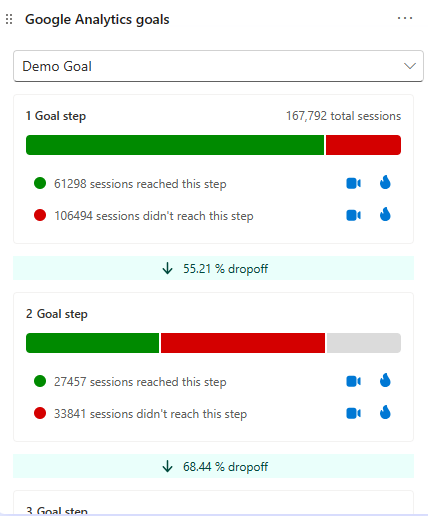Discover What Data Is Google Analytics Goals Unable to Track
Discover the Limitations of Google Analytics Goals: Introducing the Data Kind That Remain Untrackable
As businesses significantly count on data-driven decision-making, understanding the constraints of devices like Google Analytics becomes paramount. While Google Analytics Goals deal valuable understandings into customer communications, there exist data types that avoid tracking, presenting difficulties to an extensive understanding of individual behavior. These untrackable data types raise concerns about the precision and efficiency of the analytics information that organizations greatly depend upon for their digital methods. Curious to uncover the concealed blind areas in your data evaluation process?
Insufficient Individual Trip Tracking
Incomplete user journey monitoring within Google Analytics can impede the capacity to accurately assess user actions. When the individual journey is not fully tracked, there are voids in the data that stop a thorough understanding of how individuals interact with an internet site. This lack of insight can cause missed possibilities for optimization and renovations to the user experience.
One usual problem with insufficient customer journey tracking is the failure to see the full path that users take before finishing an objective or leaving the website. Without this information, it is testing to identify where individuals might be encountering barriers or friction points that prevent them from transforming. Furthermore, incomplete tracking can cover the influence of certain marketing initiatives or website changes on user actions.
To address this constraint, it is crucial to set up correct monitoring systems within Google Analytics to capture the whole individual journey. This might involve establishing occasion monitoring, objective funnels, or using tools like Google Tag Supervisor to make sure that no vital interactions go unrecorded. By obtaining an extensive view of the individual journey, web site proprietors can make even more educated decisions to improve customer involvement and drive conversions.
Attribution Challenges
Navigating via acknowledgment challenges in Google Analytics calls for a comprehensive understanding of just how various touchpoints contribute to the overall conversion process. Acknowledgment difficulties arise from the intricacy of modern customer journeys, where customers engage with several channels prior to transforming.
One common acknowledgment challenge is the difficulty in attributing conversions to the proper resource, particularly in cases where customers connect with multiple channels before transforming. This can bring about errors in establishing which advertising and marketing efforts are driving the most conversions. Furthermore, cross-device monitoring poses one more attribution difficulty, as customers commonly switch in between gadgets during their journey, making it testing to track their communications seamlessly. Marketing experts must thoroughly translate and analyze attribution information to make educated decisions and optimize their marketing methods effectively.
Offline Conversions
Given the obstacles related to connecting conversions accurately in online channels, the dimension of offline conversions provides a substantial opportunity for online marketers seeking an extra comprehensive understanding of their consumers' trip. Offline conversions refer to activities that consumers absorb the physical world, such as making acquisitions in brick-and-mortar stores or over the phone, attending events, or involving with printed products - what data is google analytics goals unable to track. These conversions are important for services that run both online and offline, as they supply important insights right into the effectiveness of advertising projects throughout different touchpoints
Tracking offline conversions typically presented a considerable challenge for marketing professionals, as it was challenging website link to connect these actions back to certain online communications properly. However, with innovations in modern technology, such as the assimilation of CRM systems, one-of-a-kind identifiers, and voucher codes, companies can currently bridge the space in between online and offline information to obtain a more holistic view of customer behavior. By efficiently gauging offline conversions, marketers can enhance their methods, assign sources a lot more effectively, and eventually Related Site improve the general customer experience.
Cross-Device Monitoring
Cross-device tracking plays a vital duty in understanding the interconnected nature of customers' electronic communications across multiple tools. In today's omnichannel globe, where users perfectly switch over between tablets, desktops, and smartphones, tracking their behavior across these devices is vital for online marketers to obtain an extensive sight of their client journey.

Moreover, privacy worries and laws such as GDPR and CCPA have better complicated cross-device tracking. With customers requiring even more control over their information and raised restrictions on tracking innovations, marketing experts should discover privacy-compliant and ingenious methods to link individual interactions across devices.
Dynamic Content Engagement
Recognizing individual interaction with dynamic web content is critical in optimizing electronic advertising approaches for enhanced target market communication. Dynamic web content describes website elements that change based upon individual habits, preferences, or other elements, offering a personalized experience. However, tracking individual interactions with vibrant material postures challenges for standard analytics devices like Google Analytics.
While Google Analytics can track basic communications like clicks and web page views, it might have a hard time to capture more nuanced involvements within dynamic web content. what data is google analytics goals unable to track. Metrics such as time invested in details vibrant elements, hover activities, or interactions within pop-ups are often not easily measurable making use of common tracking methods. This limitation impedes marketing professionals' capability to completely realize just how individuals are engaging with vibrant content and customize their strategies as necessary

Verdict
In conclusion, Google Analytics goals have restrictions in tracking insufficient customer journeys, attributing conversions precisely, recording offline conversions, tracking cross-device communications, and measuring dynamic web content engagement. These restrictions highlight the significance of discovering additional monitoring approaches and devices to get a more extensive understanding of individual habits and conversions past what Google Analytics can offer.
While Google Analytics Goals deal important insights right into user communications, there exist information types that elude tracking, posturing look what i found challenges to a comprehensive understanding of customer behavior.Incomplete user journey tracking within Google Analytics can prevent the capacity to properly examine individual behavior. When the user trip is not totally tracked, there are spaces in the data that protect against a detailed understanding of exactly how individuals communicate with a site.One common concern with insufficient user trip monitoring is the failure to see the full course that individuals take before finishing a goal or leaving the site. By obtaining a detailed view of the user journey, internet site owners can make even more educated decisions to boost user engagement and drive conversions.